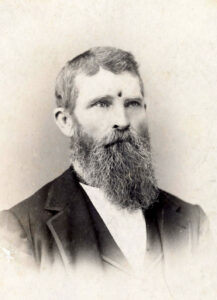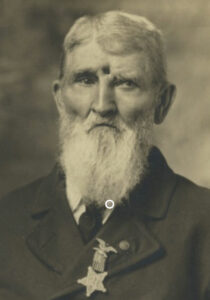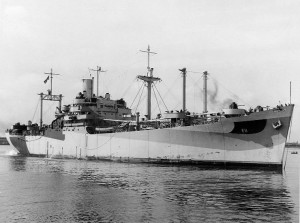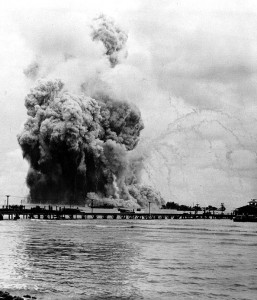fragments
 Anytime a soldier goes to war, the possibility exists that they will be severely wounded or even killed in action, but I don’t think anyone expected the events of September 19, 1863. It was the middle of the Civil War, and Jacob C Miller was a private in Company K, 9th Indiana Infantry Regiment. The company was fighting in the Battle of Chickamauga near Brock Field in southeastern Tennessee. One of the fastest ways to “get dead” is to get shot in the head. There is something about a bullet hitting the skull that puts an end to life pretty quickly…most of the time, anyway.
Anytime a soldier goes to war, the possibility exists that they will be severely wounded or even killed in action, but I don’t think anyone expected the events of September 19, 1863. It was the middle of the Civil War, and Jacob C Miller was a private in Company K, 9th Indiana Infantry Regiment. The company was fighting in the Battle of Chickamauga near Brock Field in southeastern Tennessee. One of the fastest ways to “get dead” is to get shot in the head. There is something about a bullet hitting the skull that puts an end to life pretty quickly…most of the time, anyway.
Maybe it was the type of bullets used in the Civil War, but no matter how it happened, I don’t think anyone would disagree with me when I say that living after taking a bullet between the eyes was a miracle. Jacob C Miller was just such a miracle man. After being shot, Miller crumpled to the ground. I’m sure everyone thought it was over, but Miller said later that he could hear the words of his captain, who said, “It’s no use to remove poor Miller, for he is dead.” The company, believing he was dead, moved on. Now, just imagine the shock when Miller became conscious and found himself alone. He raised up in a sitting position. Curiosity caused him to feel his wound. Clearly there was damage done. Miller’s left eye was out of place, and he tried to  place it back, but had to move the crushed bone back together, or as near together as he could first. Once the eye was in its proper place, he bandaged the eye the best he could with his bandana. Then he began the journey to get help. Miller struggled to follow his company, until he was finally picked up by a liter party, and taken for treatment.
place it back, but had to move the crushed bone back together, or as near together as he could first. Once the eye was in its proper place, he bandaged the eye the best he could with his bandana. Then he began the journey to get help. Miller struggled to follow his company, until he was finally picked up by a liter party, and taken for treatment.
When he was taken to the doctors, and they examined him, they said that they were able to see his pulsating brain quite clearly. That said, we know that the bullet wasn’t somehow stopped by his skull. It had actually entered the brain lining, or at least into the skull bone. At that point, nothing was done with the bullet, and Miller was sent home to Logansport, Indiana. Doctors there were hesitant to remove the bullet, because they thought Miller would die, and somehow, he seemed to be functioning ok with the bullet in place. In the end  they did remove about a third of the bullet, and Miller went on to live his life. Nevertheless, more pieces of the bullet simply fell out decades later. It was as if his body just rejected the foreign pieces of lead and moved them out of his head. It was a good thing, because the pressure on the bullet fragments during times of illness caused his to become delirious. Once the fragments fell out, that stopped.
they did remove about a third of the bullet, and Miller went on to live his life. Nevertheless, more pieces of the bullet simply fell out decades later. It was as if his body just rejected the foreign pieces of lead and moved them out of his head. It was a good thing, because the pressure on the bullet fragments during times of illness caused his to become delirious. Once the fragments fell out, that stopped.
Miller was born on August 4, 1840, in Bellevue, Ohio. He was shot on September 19, 1863, at the age of 23 years. Private Jacob C Miller lived an amazing 54 years with an open wound in his head. The wound never fully healed, but did not fully penetrate his skull, and apparently the brain area did close over, and caused no damage to his brain. He died January 13, 1917, in Omaha, Nebraska at the age of 76 years. No cause of death is mentioned, but I guess we know it wasn’t a gunshot wound to the head.
 Any time ammunition, explosives, and bombs are being stored in a smaller space, and handled by multiple people, there is a possibility of disaster. The USS Mount Hood was the lead ship of her class of ammunition ships for the United States Navy in World War II. Her life was short lived. The North Carolina Shipbuilding Company began work on the ship on September 28, 1943, and the intended name of the ship was SS Marco Polo. It was first launched on November 28, 1943, and aquired by the Navy on January 28, 1944. It was commissioned the USS Mount Hood on July 1, 1944. The ship was named after Mount Hood, the volcano in the Cascade Range in Oregon.
Any time ammunition, explosives, and bombs are being stored in a smaller space, and handled by multiple people, there is a possibility of disaster. The USS Mount Hood was the lead ship of her class of ammunition ships for the United States Navy in World War II. Her life was short lived. The North Carolina Shipbuilding Company began work on the ship on September 28, 1943, and the intended name of the ship was SS Marco Polo. It was first launched on November 28, 1943, and aquired by the Navy on January 28, 1944. It was commissioned the USS Mount Hood on July 1, 1944. The ship was named after Mount Hood, the volcano in the Cascade Range in Oregon.
Following a short fitting out and shakedown period in the Chesapeake Bay area, the USS Mount Hood reported for duty to ComServFor, Atlantic Fleet on August 5, 1944. She was assigned to carry cargo to the Pacific, and she pulled in to Norfolk, where her holds were loaded. The she was transfered to the Panama Canal as part of  Task Group 29.6. She finally ended up Seeadler Harbor at Manus Island of the Admiralty Islands on September 22, 1944. There she was assigned to ComSoWesPac. The ship was to be dispensing ammunition and explosives to ships preparing for the Philippine offensive.
Task Group 29.6. She finally ended up Seeadler Harbor at Manus Island of the Admiralty Islands on September 22, 1944. There she was assigned to ComSoWesPac. The ship was to be dispensing ammunition and explosives to ships preparing for the Philippine offensive.
At 8:30am, on November 10, 1944, 17 of USS Mount Hood’s crew members, including Lieutenant Lester H Wallace left the ship to go ashore. At 8:55am, while walking on the beach the men saw a flash and heard two quick explosions. They immediately jumped back in their boat and headed for their ship, only to find that, like volcanoes tend to do, the USS Mount Hood had exploded. There was literally no ship to come back to, and other ships in the area were heavily damaged too. The USS Mount Hood had been anchored in 35 feet of water, and had exploded with an estimated 3,800 tons of ordnance material on board. Mushrooming smoke rose to 7,000 feet, completely obscuring the ship and the surrounding area for approximately 500 yards. It was easy to see where USS Mount Hood had been, because the explosion created a trench in the ocean floor 1,000 feet long, 200 feet wide, and 40 feet deep.The largest remaining piece of the hull was found in the trench and measured about 16 feet by 10 feet. No other remains were found except the fragments which struck the other ships in the area. No human remains were recovered of the 350 men aboard USS Mount Hood or the small boats loading alongside at the time of the explosion.

There were 271 men in surrounding ships that were injured, and 82 of nearby Mindanao’s crew were killed. In all, 22 small boats and landing craft were sunk, destroyed, or damaged beyond repair. The exact cause of USS Mount Hood’s explosion was never determined, but since the possibility of enemy action was remote, it was thought that rough handling of some of the explosives during the loading and unloading process was to blame for the disaster. With no survivors and so little of the ship left, I’m sure that the investigation was an impossible task. I do find it ironic that a ship named after a volcano, ended up exploding, and I find the loss of life to be a very sad thing indeed.

